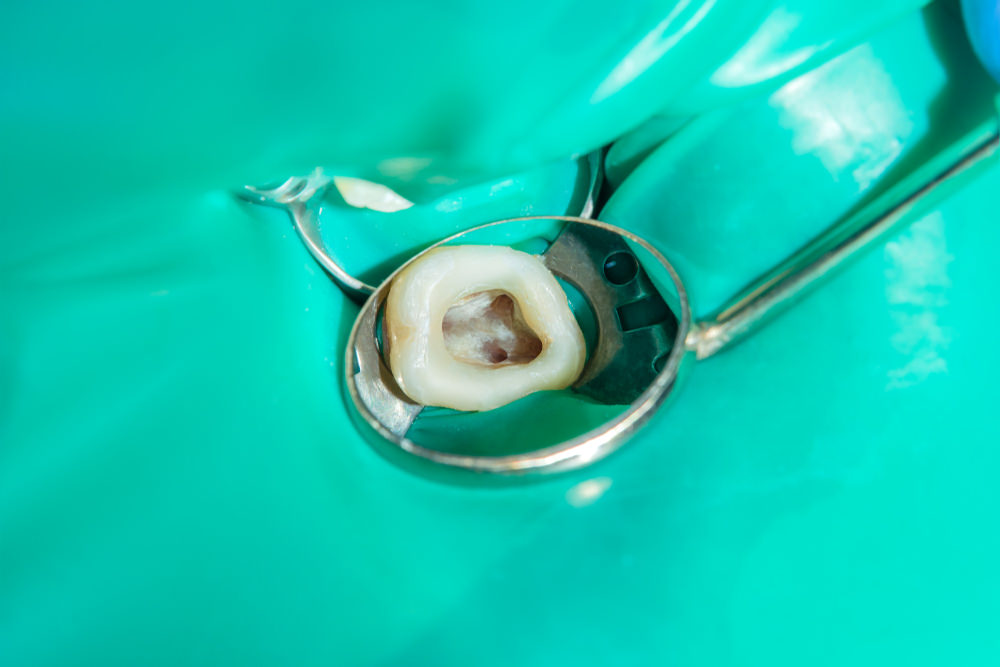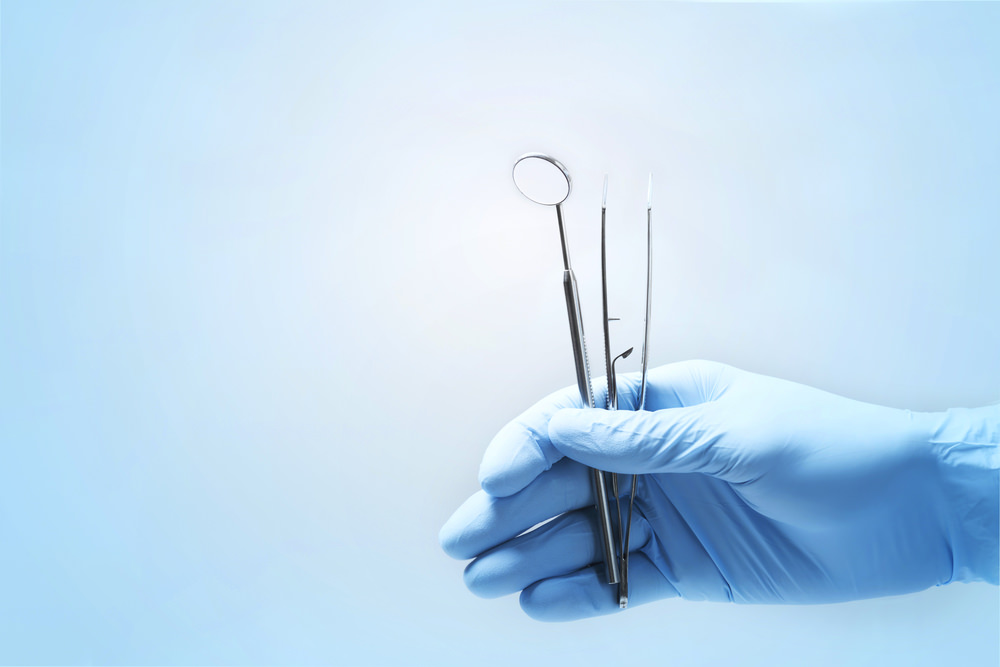Dentistry and the Dental Dam – Is it Beneficial?
If you have ever had any dental restoration work performed, it is highly likely you have come into contact with a dental dam.
So, just what is a dental dam?
A dental dam, also called a rubber dam, is a thin square sheet of plastic that is used to isolate the tooth that is being operated on from the rest of your mouth and lips.
Its main purpose is to keep the tooth dry whilst being treated, by preventing saliva or blood from interfering with the dental work, which reduces your risk of the tooth being exposed to bacteria or becoming infected.
Dental procedures are technique sensitive and most of the materials we use must be executed in a dry field.
Today we’ll cover everything about the dental dam.
Let’s get started, so the next time you need a dental treatment that may require the use of one, you can go in armed full of knowledge.
What Materials are Dental Dams Made Of?
Dental dams are mostly made from the rubber material latex.
But safety measures have been put in place for people that have latex allergies.
So, latex-free options are also available.
These other materials that can be used if this is the case for you include nitrile or silicone.
All dental dams, regardless of material, are usually 15cm long, and 15cm wide.
Next, to secure them to your tooth, a metal clamp is used.
Prior to putting the dam in your mouth, the dental professional may fasten dental floss around the clamp.
This floss behaves like an anchor, preventing swallowing, and also gives them a point of reference if the clamp becomes knocked out of position.
Then, the dam also has a frame, which keeps it tightly stretched so the dental professional can do their work without the dam getting in their way.
These are made from several different materials, including stainless steel, polypropylene, or polymer plastics.
They will all have small pins on their exterior edges, which are used to fasten the dam to the frame.
Where do Dentists Buy Dental Dams?
Dentists can purchase Dental or Rubber Dams from online medical stores, such as those listed below:
– Rubber Dam – Ongard, from Disposable Medical Supplies.
– Premium Quality Dental Rubber Dam, 5″ x 5″, Green by Vivid (Medium) at Ninth Avenue.
– Safe Touch Dental Dams 6”x6”, from AP Direct Sales.
– Kulzer Rubber Dam Medium 6×6 36 sheets from Adam Dental Supplies.
– Rubber Dam NON-LATEX Powder Free Medium from Adam Dental Supplies.
Dental Procedures That Require a Dental Dam
The dental dam is used in several dental procedures.
These include:
- Endodontic treatments, such as root canal treatments, fissure sealants, dental implants, and the positioning of some veneers.
- Prosthodontics (crowns and bridges).
- Fillings, and
- Other restorative treatments, where parts of a broken tooth are restored to their previous shape, structure or functionality.
Dental professionals’ opinions of the dam vary greatly – many use them regularly, others only during certain procedures.
In Australia, it is obligatory to use a dental dam during a root canal procedure.
This is because all your nerves and blood vessels are exposed.
So, clean, sanitary conditions are necessary to make sure this procedure is carried out successfully as possible.
Pros and Cons of Using a Dental Dam
Your mouth has 500 to 1000 different types of bacteria.
So, the most important reason for the dental dam is, when a dental procedure is being performed that may expose the inside of your teeth, that they prevent those bacteria and create a sterile environment to the best of our abilities.
The inside of your tooth, the tooth nerve if inflamed will already have bacteria so using the rubber dam we can clean this bacteria out with a solution that will not enter the rest of your mouth or throat.
Advantages of Dental Dams
They also have a number of other advantages.
These include that they:
- Pull back your cheeks, tongue and lips, and lessens mirror fogging, and so increases the dental professional’s visibility of the treatment area, which can make the procedure more time-efficient.
- Limit your risk of swallowing any dental tools, fluids or debris, as they guide them away from your mouth. This makes the process more comfortable and hygienic and prevents any damage from being done to your mouth.
- Give the dental professional some protection, by reducing liability if you choke or swallow something during the procedure.
- Decrease the risk of your oral microorganisms in your blood or saliva becoming contaminated or infected.
- Allow the dental professional to concentrate on your tooth. They help to isolate the treatment area and deliver a clean, dry operating site, that is devoid of any saliva, blood, or debris.
- Stop saliva and blood from entering the treatment area, again reducing your risk of contamination or infection.
- Allow for the greatest bond strength when restorative materials and cement is used, making it more durable. This is because they keep filling materials such as composite dry, while it is being placed and cured. So, the maximum adhesive strength is achieved between the materials, dentin and enamel.
- Limit exposure to mercury when amalgam materials are used in your mouth.
- Decrease splashes of aerosol in your oral cavity.
- During dental procedures, protect you, the dental professional, and hygienists, from exposure to your blood and saliva, and thus potential exposure to HIV, hepatitis, or other transmittable diseases / blood-borne pathogens.
- Protect your tongue and gums from any irritation that could occur if not worn.
Dental Dam Disadvantages
But as with most things, they do also have their disadvantages.
These include that they:
- Take additional time to apply – they can be tricky, so can extend the time the procedure takes.
- Add to the cost of the procedure for the materials – stamp, dental clamps, dental dam and frame.
- Cannot be used on teeth that are not correctly positioned.
- Could potentially break in your mouth (hence why floss is placed around the clamp, as a preventative measure if they need to be retrieved).
- Could injure your oral mucosa whilst being placed and removed.
- Can be painful, especially if you are having a treatment where you do not require a local anesthetic, as it is placed along the gum line. This can cause your gums to bleed, injure your periodontal ligament, or erode the cementum on the root of your tooth.
- Can cause you some discomfort, particularly if you suffer from claustrophobia.
- Are mainly made from latex, so reactions can be uncomfortable, such as allergic contact dermatitis, allergic contact cheilitis, or allergic contact stomatitis, or life-threatening (anaphylaxis).
- Are placed over your mouth, so can block your airway. This may cause you to have trouble breathing, especially if you cannot have problems breathing through your nose, such as you have a cold, a broken nose, adenoids, or sinus issues. It can also cause gagging.
- Are usually bright in colour, so may change the discernible colour of the tooth, leading to an incorrect shade choice. For example, when choosing a dental composite. So, dental professionals should always choose their shades prior to placing the dental dam.
- Can make it very tricky for you to speak, so can limit the communication between you and the dental professional. But this can be a good thing for overly talkative patients, as sometimes they can unintentionally and unknowingly interfere with the effectiveness of the procedure. So, they may allow the dental professional to focus on the treatment, thereby reducing the time it takes.
- May cause you to become more anxious.
Even though they can be a great instrument for some procedures, some dental professionals are not in favour of using them.
This is because of the extra time and money, and because placing them can be tricky.
As such, they can be deemed inconvenient.
Some dentists also do not have the proper training to use them.
Research has been done into the use of the dental dam, and it shows that only 12% of dental restorations were carried out with a dental dam.
But, generally speaking, most people do not have a problem with a dental dam being placed in their mouth during a dental procedure. Some people actually tend to prefer a dental dam being used, as they know they are safer with one.
But many patients do say no to the dental dam. So, if you do find them uncomfortable, you can think about rejecting them.
But as you can see, there are notably more advantages of using them while undergoing a dental procedure than refusing to use them.
Conclusion
You could compare the dental dam to the drapes a surgeon uses to keep areas of your body apart when operating, to prevent bacterial contamination.
There are many reasons why they are a benefit to you when undergoing dental treatment.
The most important is that they make sure that all the bacteria in your mouth stays well away from the exposed area of your tooth.
They will help your Dentist see what they are doing, and make sure you don’t swallow something unwanted.
So, this keeps you safe from extra health issues and gives both the time and cost of the procedure added protection.
Remember, even though they might feel a bit weird, they are safe.
Now you know what dental dams are, hopefully, you’re more agreeable and comfortable using one at a dental treatment.
By Dr. V
Created at October 06, 2021, Updated at January 25, 2025
Sorry, the comment form is closed at this time.








ecopackaging2 years ago
Thanks for sharing this with all of us.